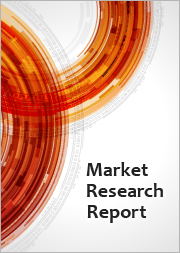
|
시장보고서
상품코드
1572525
간염 치료제 시장 : 기회, 성장 촉진요인, 산업 동향 분석 및 예측(2024-2032년)Hepatitis Treatment Market, Opportunity, Growth Drivers, Industry Trend Analysis and Forecast, 2024-2032 |
||||||
세계 간염 치료제 시장은 2023년 222억 달러 규모에 달할 것으로 예상되며, 예측 기간 동안 연평균 3.5%의 성장률을 나타낼 것으로 전망됩니다.
이 시장의 주요 원동력은 B형 간염과 C형 간염의 유병률 증가와 이러한 질병에 대한 전 세계적인 인식 증가입니다. 항바이러스 요법 및 면역 요법과 같은 치료 옵션의 혁신은 환자 치료를 강화하여 시장 확대에 기여하고 있습니다. 또한 중합효소연쇄반응(PCR) 검사와 같은 진단 기술의 발전은 조기 발견을 향상시켜 간염 치료에 대한 수요를 더욱 촉진하고 있습니다.
시장은 질병 유형, 치료 유형, 투여 경로, 최종 사용자별로 분류됩니다. 질병 유형 중 C형 간염 부문은 2023년 98억 달러로 우위를 차지할 것으로 예상됩니다. 감염률 증가와 항바이러스 치료의 발전이 이 부문의 성장을 가속하고 있습니다. 제약 회사들은 약물의 효능을 높이고 치료 기간을 단축하며 부작용을 최소화하기 위해 연구 개발에 많은 투자를 하고 있습니다.
치료제 유형별로는 간염 감염률 증가에 힘입어 항바이러스제가 2023년 61.4%의 주요 점유율을 차지할 것으로 예상됩니다. 항바이러스제는 특히 B형 및 C형 간염을 관리하는 데 매우 중요한 역할을 하며, 바이러스 양을 감소시키고 질병의 진행을 억제합니다. 또한, 신흥 시장에서는 간염에 대한 인식이 높아지고 조기 진단의 중요성이 높아지면서 항바이러스제에 대한 수요가 증가하고 있습니다.
경구용 항바이러스제 시장은 2032년까지 121억 달러에 달할 것으로 예상되는데, 이는 경구용 항바이러스제의 편리성과 환자 순응도가 높기 때문입니다. 경구용 치료제, 특히 직접 작용하는 항바이러스제는 높은 효능과 적은 부작용으로 간염 치료에 혁명을 일으켰습니다.
최종 사용자 부문에서는 병원 및 전문 클리닉을 포함한 의료 서비스 제공업체가 연평균 3.5%의 성장률을 보일 것으로 예상됩니다. 이들 의료기관은 항바이러스 치료, 진단 및 환자 추적 관찰에 있어 중요한 역할을 담당하고 있습니다. 백신 접종 프로그램 및 피해 경감 서비스와 같은 공중 보건 노력도 이 부문의 성장에 기여하고 있습니다.
지역별로 보면 북미는 항바이러스 치료의 발전과 강력한 의료 인프라에 힘입어 2032년까지 134억 달러에 달할 것으로 예상됩니다. 유럽, 특히 영국은 간염 환자 증가와 치료 옵션의 발전으로 인해 강력한 성장세를 보이고 있습니다. 아시아태평양은 조기 발견, 저렴한 치료법에 대한 접근성, 정부 주도의 간염 관리 프로그램에 힘입어 연평균 4.1%의 성장률을 보일 것으로 예상됩니다.
목차
제1장 조사 방법과 조사 범위
제2장 주요 요약
제3장 업계 인사이트
- 생태계 분석
- 업계에 대한 영향요인
- 성장 촉진요인
- 간염 감염자 증가
- 의약품 개발 진보
- 병용요법에 대한 수요 증가
- 업계의 잠재적 리스크&과제
- 약가 상승
- 부작용과 유해 반응
- 성장 촉진요인
- 성장 가능성 분석
- 규제 상황
- 향후 시장 동향
- Porter's Five Forces 분석
- PESTEL 분석
제4장 경쟁 구도
- 서론
- 기업 점유율 분석
- 기업 매트릭스 분석
- 주요 시장 기업 - 경쟁 분석
- 경쟁 포지셔닝 매트릭스
- 전략 대시보드
제5장 시장 추산·예측 : 질환 유형별, 2021년-2032년
- 주요 동향
- A형 간염
- B형 간염
- C형 간염
- 기타 간염
제6장 시장 추산·예측 : 치료 유형별, 2021년-2032년
- 주요 동향
- 항바이러스제
- 뉴클레오티드/뉴클레오티드 유사체
- 폴리메라제 억제제
- 프로테아제 억제제
- 기타 항바이러스제
- 면역조절제(인터페론)
- 병용요법
- 간이식
- 기타 치료법
제7장 시장 추산·예측 : 투여 경로별, 2021년-2032년
- 주요 동향
- 경구
- 비경구
제8장 시장 추산·예측 : 최종사용자별, 2021년-2032년
- 주요 동향
- 의료 제공자
- 병원
- 전문 클리닉
- 환자
- 기타 최종사용자
제9장 시장 추산·예측 : 지역별, 2021년-2032년
- 주요 동향
- 북미
- 미국
- 캐나다
- 유럽
- 독일
- 영국
- 프랑스
- 스페인
- 이탈리아
- 네덜란드
- 기타 유럽
- 아시아태평양
- 중국
- 일본
- 인도
- 호주
- 한국
- 기타 아시아태평양
- 라틴아메리카
- 브라질
- 멕시코
- 아르헨티나
- 기타 라틴아메리카
- 중동 및 아프리카
- 남아프리카공화국
- 사우디아라비아
- 아랍에미리트(UAE)
- 기타 중동 및 아프리카
제10장 기업 개요
- 서비스 제공업체
- Barnes-Jewish Hospital
- Bumrungrad International Hospital
- Cedars-Sinai
- Cleveland Clinic
- Mayo Clinic
- 의약품 제조업
- AbbVie Inc.
- Biocon, Inc.
- Bristol-Myers Squibb Company
- Dynavax Technologies
- F. Hoffmann-La Roche Ltd.
- Gilead Sciences, Inc.
- GlaxoSmithKline plc
- Lupin Limited
- Merck and Co., Inc.
- Novartis AG
The Global Hepatitis Treatment Market reached a valuation of USD 22.2 billion in 2023 and is expected to grow at a CAGR of 3.5% through the forecast period. The market is primarily driven by the rising incidence of hepatitis B and C infections and the growing global awareness surrounding these conditions. Innovations in treatment options, such as antiviral therapies and immunotherapies, are enhancing patient care and contributing to market expansion. Additionally, advancements in diagnostic technologies like polymerase chain reaction (PCR) testing have improved early detection, further fueling demand for hepatitis treatments.
The overall hepatitis treatment industry is segregated based on Disease Type, Treatment Type, Route of Administration, End-user, and Region.
The market is segmented based on disease type, treatment type, route of administration, and end-user. Among disease types, the hepatitis C segment dominated with USD 9.8 billion in 2023. Rising infection rates and advancements in antiviral treatments are propelling the growth of this segment. Pharmaceutical companies are heavily investing in R&D to enhance drug efficacy, reduce treatment durations, and minimize side effects.
In terms of treatment types, antiviral drugs captured a major share of 61.4% in 2023, driven by the growing prevalence of hepatitis infections. These therapies are crucial in managing hepatitis, particularly for types B and C, where they decrease the viral load and control disease progression. The demand for antiviral drugs is also increasing in emerging markets due to rising awareness of the disease and the importance of early diagnosis.
Regarding the route of administration, the oral segment is set to reach USD 12.1 billion by 2032, thanks to its convenience and high patient compliance. Oral therapeutics, especially direct-acting antivirals, have revolutionized hepatitis treatment with higher efficacy and fewer side effects.
In the end-user category, healthcare providers, including hospitals and specialty clinics, are expected to grow at a CAGR of 3.5%. These providers play a key role in administering antiviral therapies, conducting diagnostics, and monitoring patient progress. Public health initiatives, such as vaccination programs and harm reduction services, also contribute to this segment's growth.
Regionally, North America is projected to reach USD 13.4 billion by 2032, driven by advancements in antiviral therapies and a strong healthcare infrastructure. Europe, particularly the UK, is experiencing robust growth due to rising hepatitis cases and evolving treatment options. In Asia-Pacific, the market is expected to expand at a CAGR of 4.1%, supported by early detection, access to affordable therapies, and government-led hepatitis management programs.
Table of Contents
Chapter 1 Methodology and Scope
- 1.1 Market scope and definitions
- 1.2 Research design
- 1.2.1 Research approach
- 1.2.2 Data collection methods
- 1.3 Base estimates and calculations
- 1.3.1 Base year calculation
- 1.3.2 Key trends for market estimation
- 1.4 Forecast model
- 1.5 Primary research and validation
- 1.5.1 Primary sources
- 1.5.2 Data mining sources
Chapter 2 Executive Summary
- 2.1 Industry 360° synopsis
Chapter 3 Industry Insights
- 3.1 Industry ecosystem analysis
- 3.2 Industry impact forces
- 3.2.1 Growth drivers
- 3.2.1.1 Increasing prevalence of hepatitis infections
- 3.2.1.2 Advancements in drug development
- 3.2.1.3 Rising demand for combination therapies
- 3.2.2 Industry pitfalls and challenges
- 3.2.2.1 High cost of medications
- 3.2.2.2 Side effects and adverse reactions
- 3.2.1 Growth drivers
- 3.3 Growth potential analysis
- 3.4 Regulatory landscape
- 3.5 Future market trends
- 3.6 Porter's analysis
- 3.7 PESTEL analysis
Chapter 4 Competitive Landscape, 2023
- 4.1 Introduction
- 4.2 Company market share analysis
- 4.3 Company matrix analysis
- 4.4 Competitive analysis of major market players
- 4.5 Competitive positioning matrix
- 4.6 Strategy dashboard
Chapter 5 Market Estimates and Forecast, By Disease Type, 2021 - 2032 ($ Mn)
- 5.1 Key trends
- 5.2 Hepatitis A
- 5.3 Hepatitis B
- 5.4 Hepatitis C
- 5.5 Other hepatitis types
Chapter 6 Market Estimates and Forecast, By Treatment Type, 2021 - 2032 ($ Mn)
- 6.1 Key trends
- 6.2 Anti-viral drugs
- 6.2.1 Nucleoside/nucleotide analogues
- 6.2.2 Polymerase inhibitors
- 6.2.3 Protease inhibitors
- 6.2.4 Other anti-viral drugs
- 6.3 Immune modulators (interferons)
- 6.4 Combination therapies
- 6.5 Liver transplant
- 6.6 Other treatment types
Chapter 7 Market Estimates and Forecast, By Route of Administration, 2021 - 2032 ($ Mn)
- 7.1 Key trends
- 7.2 Oral
- 7.3 Parenteral
Chapter 8 Market Estimates and Forecast, By End-user, 2021-2032 ($ Mn)
- 8.1 Key trends
- 8.2 Healthcare providers
- 8.2.1 Hospitals
- 8.2.2 Specialty clinics
- 8.3 Patients
- 8.4 Other end-users
Chapter 9 Market Estimates and Forecast, By Region, 2021 - 2032 ($ Mn)
- 9.1 Key trends
- 9.2 North America
- 9.2.1 U.S.
- 9.2.2 Canada
- 9.3 Europe
- 9.3.1 Germany
- 9.3.2 UK
- 9.3.3 France
- 9.3.4 Spain
- 9.3.5 Italy
- 9.3.6 Netherlands
- 9.3.7 Rest of Europe
- 9.4 Asia Pacific
- 9.4.1 China
- 9.4.2 Japan
- 9.4.3 India
- 9.4.4 Australia
- 9.4.5 South Korea
- 9.4.6 Rest of Asia Pacific
- 9.5 Latin America
- 9.5.1 Brazil
- 9.5.2 Mexico
- 9.5.3 Argentina
- 9.5.4 Rest of Latin America
- 9.6 Middle East and Africa
- 9.6.1 South Africa
- 9.6.2 Saudi Arabia
- 9.6.3 UAE
- 9.6.4 Rest of Middle East and Africa
Chapter 10 Company Profiles
- 10.1 Service Provider
- 10.1.1 Barnes-Jewish Hospital
- 10.1.2 Bumrungrad International Hospital
- 10.1.3 Cedars-Sinai
- 10.1.4 Cleveland Clinic
- 10.1.5 Mayo Clinic
- 10.2 Medication Manufacturers
- 10.2.1 AbbVie Inc.
- 10.2.2 Biocon, Inc.
- 10.2.3 Bristol-Myers Squibb Company
- 10.2.4 Dynavax Technologies
- 10.2.5 F. Hoffmann-La Roche Ltd.
- 10.2.6 Gilead Sciences, Inc.
- 10.2.7 GlaxoSmithKline plc
- 10.2.8 Lupin Limited
- 10.2.9 Merck and Co., Inc.
- 10.2.10 Novartis AG



















